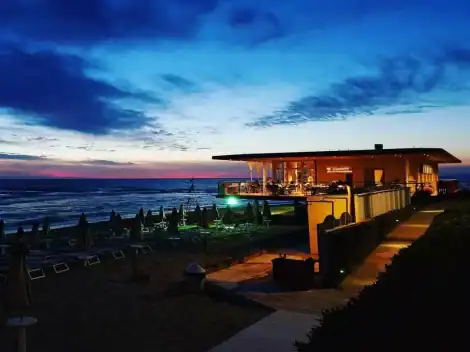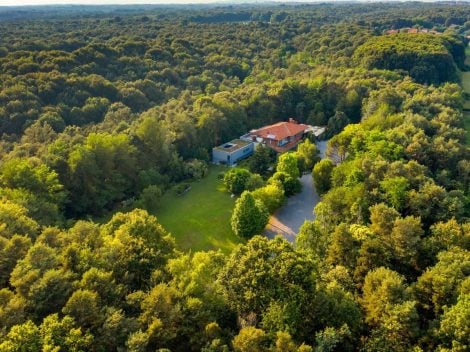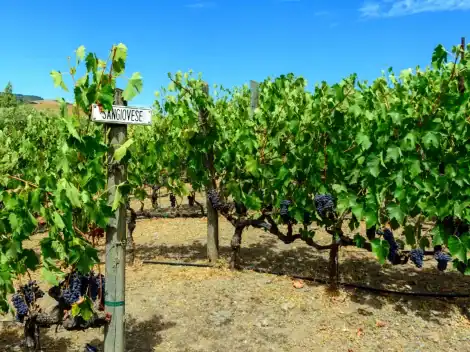by Laura Giorgi
When he's not in the kitchen, he's likely out in the truffle grounds or the woods surrounding the village. As he says, "Every season has its type of truffle." Just as the forest works every day, year-round, so does Matteo Cameli’s kitchen at Al Vecchio Convento in Portico di Romagna. The surrounding nature, with its seasons and Apennine scents, dictates a menu that tells the story of this mountainous area and the small, diverse community that works there, making a tangible contribution to keeping the village alive.
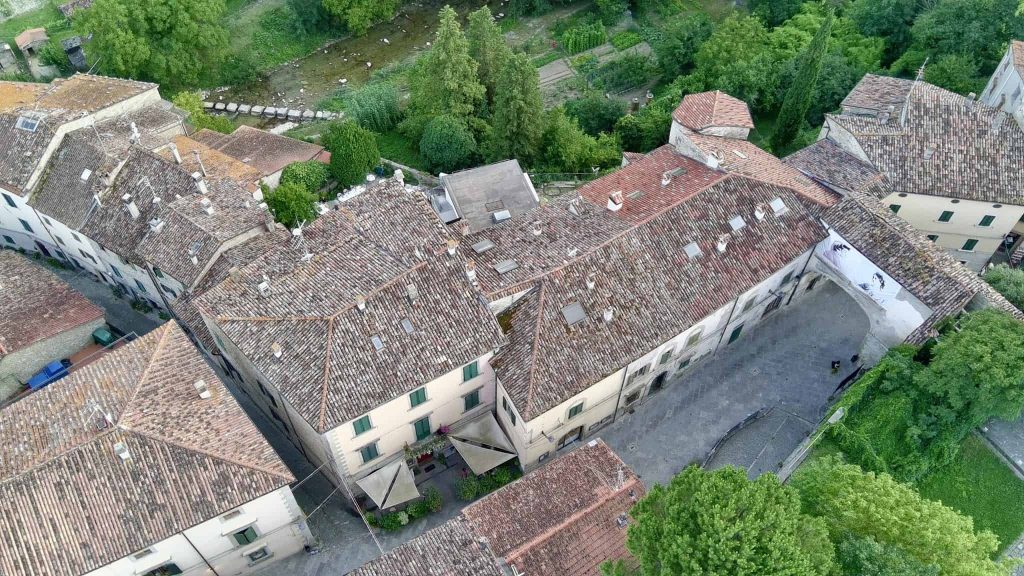
Al Vecchio Convento in the village of Portico di Romagna seen from above, and the humpback bridge over the Montone stream. Photo by Mauro Monti.
Matteo Cameli learned how to find mushrooms and truffles from his father, Gianni, who now watches from retirement as the continuous comings and goings unfold within the ancient walls of this building. Having left Milan nearly 50 years ago (the exact half-century mark will be reached in 2025), Gianni and his wife Marisa Raggi transformed it into the hospitality and dining establishment that their youngest son now leads. In this off-the-beaten-path mountain village, it has become both a gastronomic destination and a multicultural hub.
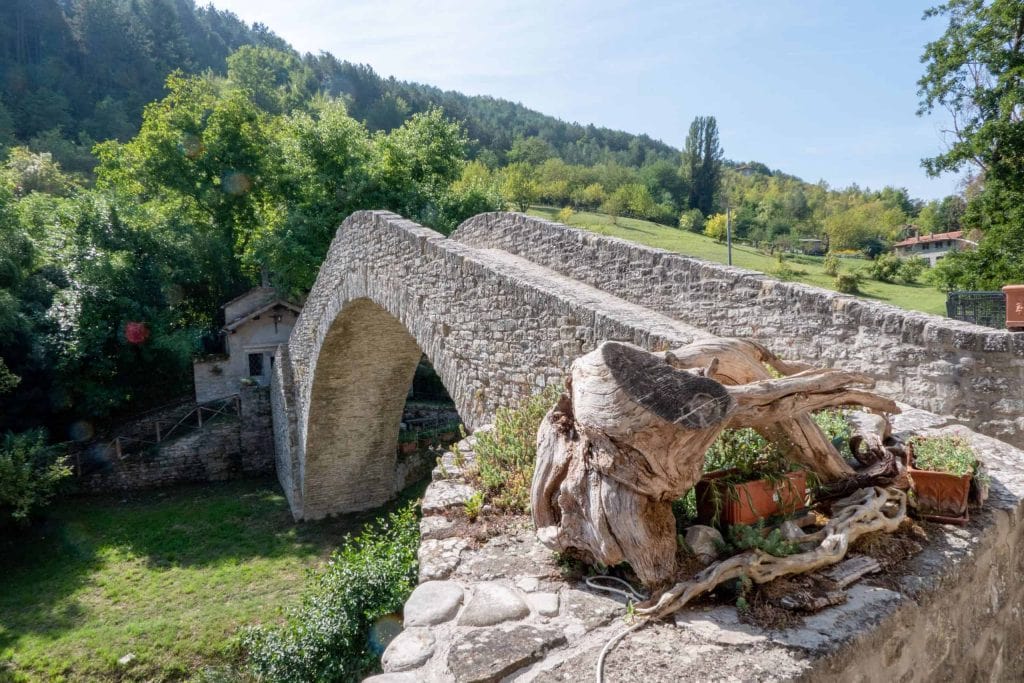
Wild and homegrown
The truffle grounds, leased for decades, are reached by crossing an undisturbed meadow, which is a true reserve of biodiversity. Here, they gather for the kitchen various herbs such as pennyroyal, burnet, wild mustards, chamomile, fennel, wormwood, many types of wild radicchio, dandelion, and chicory. Then, they enter the shade of oaks, hornbeams, and hawthorns. "Taking care of the woods means intervening just enough to allow the trees to breathe," explains Matteo, who, along with his eight Lagotto dogs, takes turns combing other nearby forests.
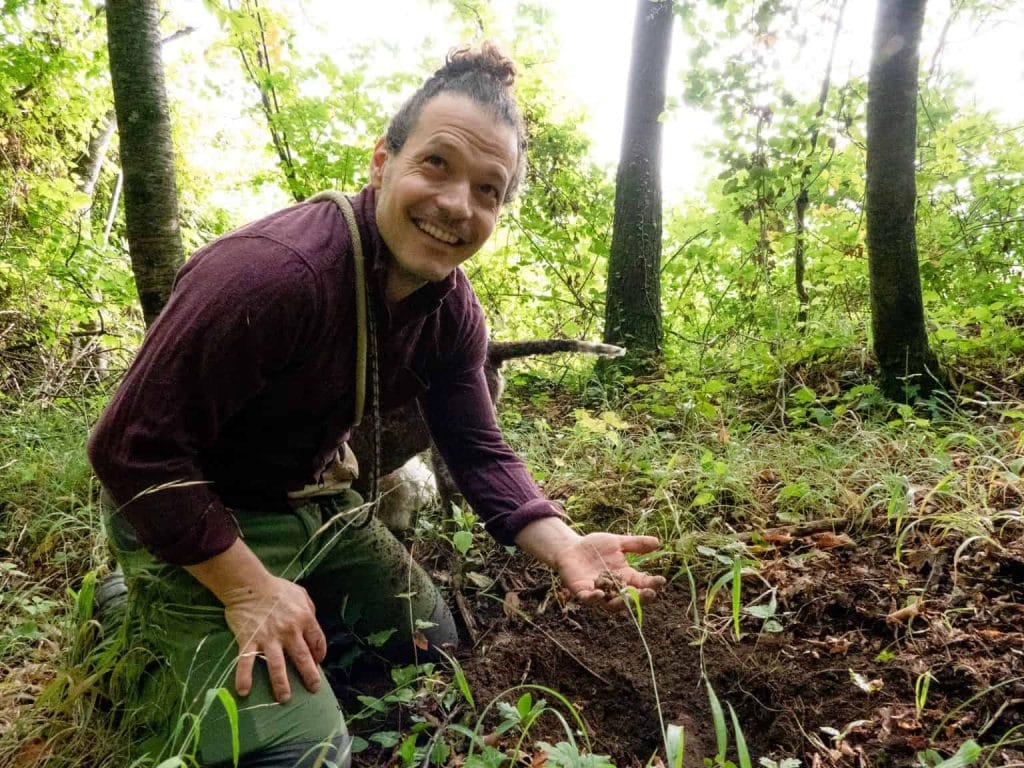
Matteo Cameli in his truffles ground
Undergroun
Every season has its truffle: the marzolino in spring, the scorzone and black truffle in summer ("this is a great year, and there’s plenty of it"), while the white truffle will arrive in autumn. The seasonal truffle is indispensable on crostini with Parmigiano cream and also enhances dishes like partridge cappelletti, fermented ricotta and spinach ravioli with sage sauce, as well as fillet or even simple side potatoes. The latest addition to the menu is a sort of choux pastry, similar in texture to a Japanese takoyaki, filled with truffle.
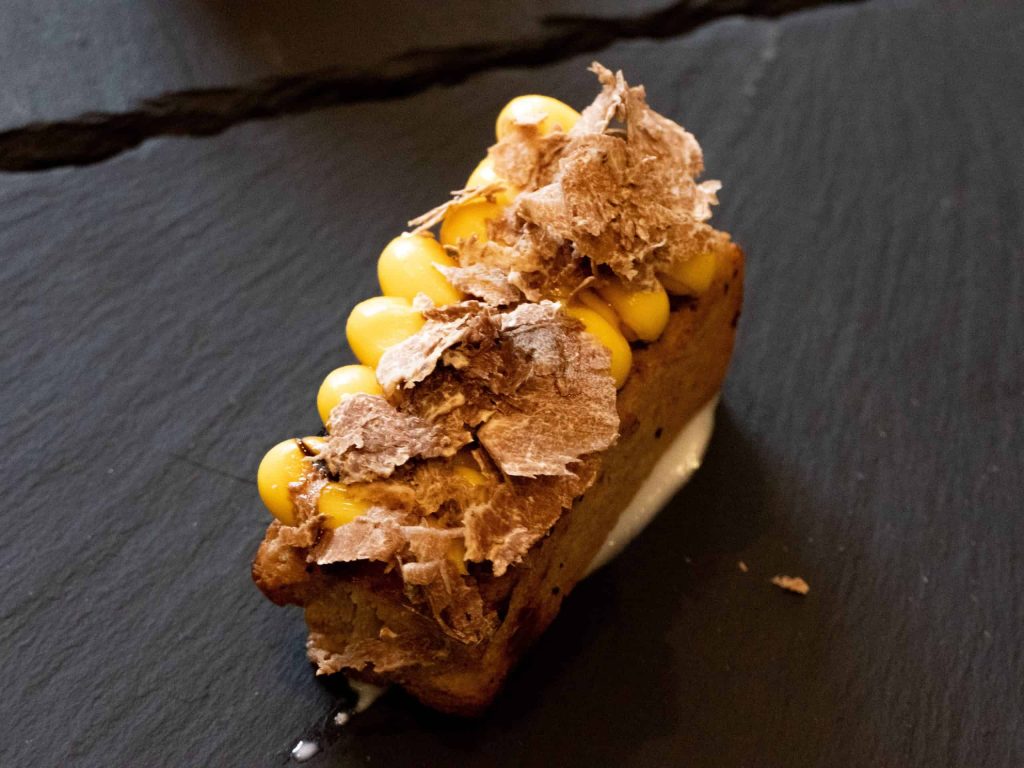
Crostini with Parmesan cream and truffle, below gnocchi with porcini mushrooms.
Here, a blend of traditional wisdom and a desire to experiment is the norm. For example, the pasta dough is rolled by hand every day, without exception, because, as Matteo puts it, "in Romagna, it would be unthinkable not to." At the same time, an hour each day is dedicated to studying different types of fermentation. As a result, dishes such as tagliatelle are seasoned with pollen garum, deer or roe deer tartare calls for fermented spruce buds, while lacto-fermented porcini mushrooms are used to dress potato gnocchi. "Different isn't enough; it has to be good. And if it seems like a reinterpretation of a classic, then the dish has to be even better than the original," sums up Matteo Cameli.
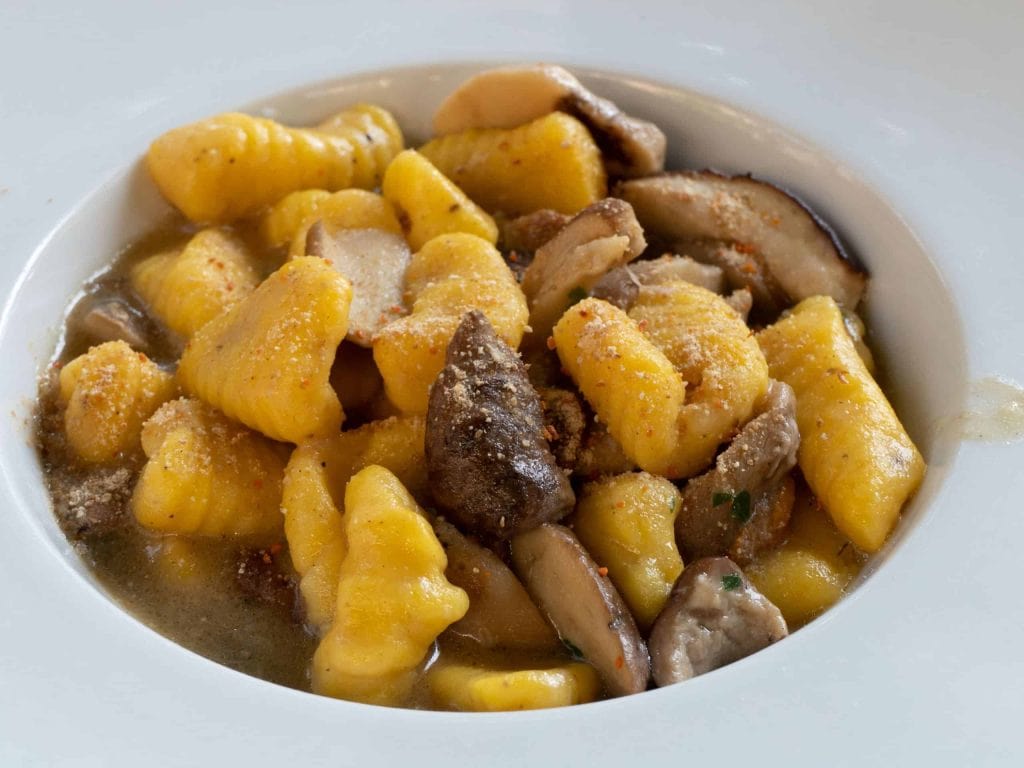
International flavours and languages, the "twin" restaurant in Copenhagen
As mentioned earlier, multiculturalism is an essential ingredient in this place of food and hospitality. There is even a “twin” Vecchio Convento in Copenhagen, started and run by Matteo’s older brother, Massimiliano Cameli. Before emigrating, Massimiliano, together with his brother Matteo, conceived the festival *Chef sotto i portici* (Chefs Under the Arches) about fifteen years ago. This festival, which continues to take place in the kitchens of Portico di Romagna, was created to "expand the culinary and cultural horizons of our area by involving chefs we have met along the way and with whom we have enjoyed collaborating."
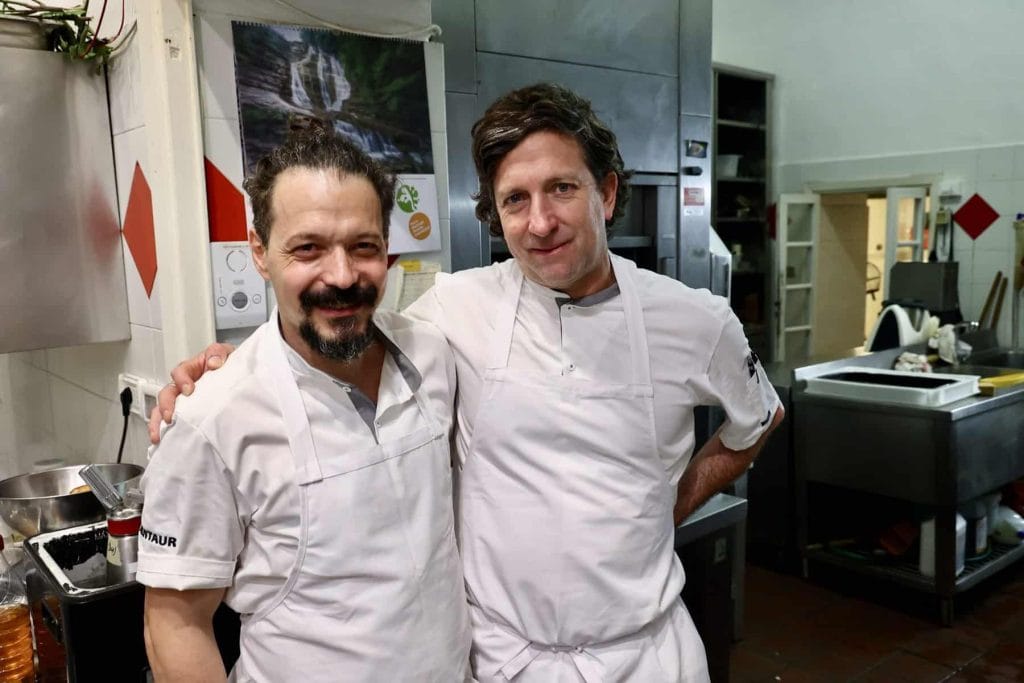
Matteo Cameli and Diego Munoz, below the team of "Chef sotto i portici 2024" - photo by Mauro Monti.
Chefs from around the world
Here, at the beginning of July each year, established and emerging talents of international cuisine gather. This year, for instance, participants included Diego Muñoz from Peru (formerly among the top in the World’s Best 50), Oscar Tiago Matos, a Michelin-starred chef from Switzerland, the Argentine-turned-Icelander Carlos Horacio Gimenez, Veronica Von Manz from Germany, and Xavier Mercado from Mexico.
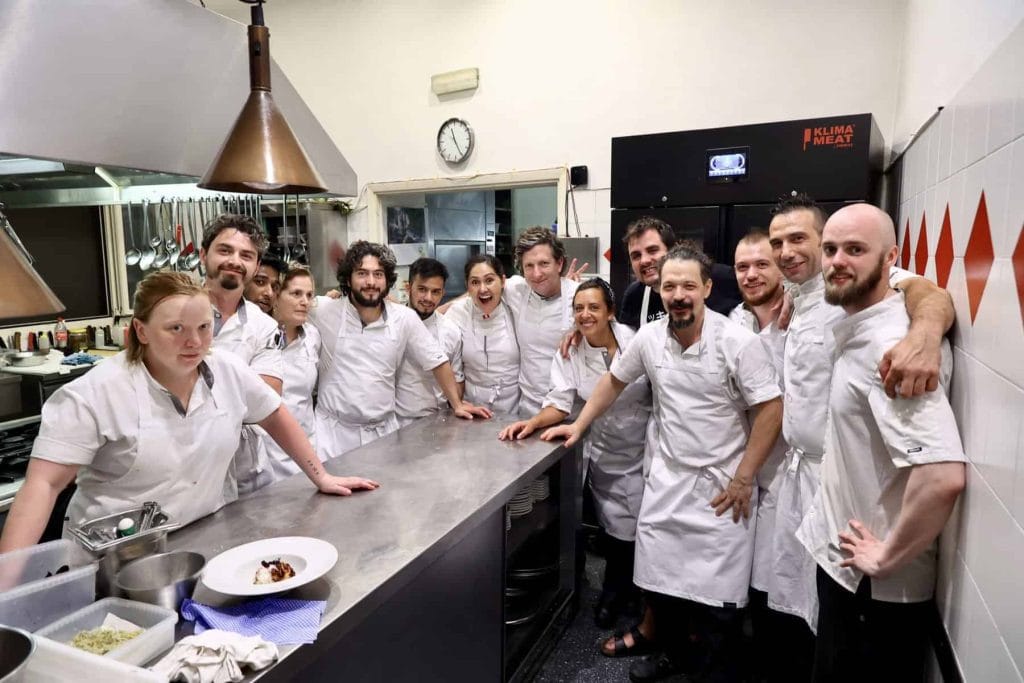
Italian chefs who have emigrated often return for a few days, while colleagues from across the world, many of whom have become close friends due to Matteo and Massimiliano’s extensive travels, come to discover Italy. Young chefs who spent time here during an internship and then ventured out into the world also occasionally return, happy to do so.
Scattered Hotel and voices from around the world
But it's not only during this festival that many languages are spoken simultaneously in this small part of inland Romagna. At Al Vecchio Convento, it happens daily in the kitchen, where interns constantly arrive from every corner of the globe, as well as in the dining room and nearby areas. Over the past decade, thanks to the Cameli family, especially Matteo’s wife, Ulla Bisgaard Pedersen, a former Italian and Spanish teacher who arrived here in 2006 and never left, Portico has also become home to the cultural centre *L'Olmo,* where tourists can learn Italian.
It's no coincidence that learning the language often involves cooking together under the guidance of guest chefs, including monthly appearances by Romagna’s MasterChef Erica Liverani, Matteo, and his mother Marisa. Marisa also bakes the delicious cakes for the *albergo diffuso* (scattered hotel) connected to the restaurant and, in the summer, sets the tables in the beautiful inner garden on the terrace overlooking the river and mountains. Soon, this garden will feature a wrought-iron sculpture by Cristiano Quadalti, a tree that will support the wisteria to create natural shade.
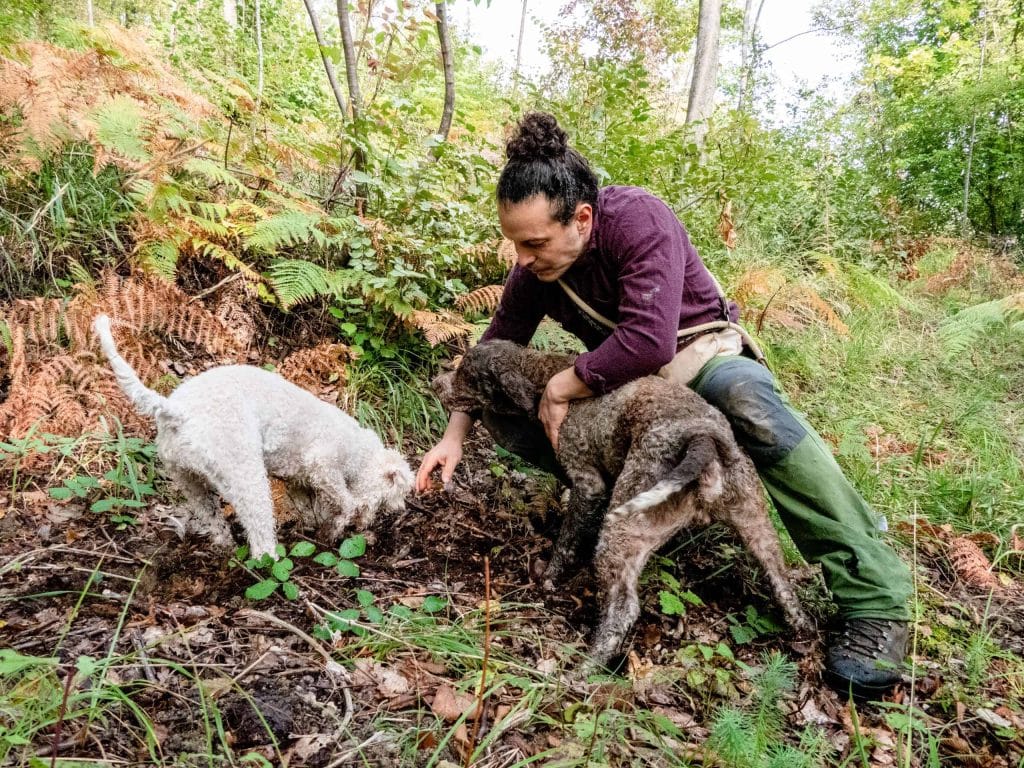
Chef Matteo Cameli with his Lagotto dogs "hunting" for truffles - photo by Mauro Monti.
The tireless Marisa is also the creator and curator of a small library where visitors can freely enter, take and leave books as they please, without any fees or obligations—just for the pleasure of reading and sharing. Words and a desire to connect are evidently molecules mixed with hydrogen and oxygen in the air here. It’s no surprise, then, that Portico di Romagna is also home to Italy’s only storytelling centre.
In short, even if living and cooking in the Apennines could be seen as “staying still,” the world certainly comes here and is amazed by the ancient stone buildings, including that of Beatrice Portinari, Dante’s beloved muse, the Apennine peaks, the clear waters of the Montone stream, the medieval humpback bridge, and what is said to be the world’s smallest volcano on Monte Busca. This small world has managed to greatly expand its horizons because, after all, the Apennines have always been a place of transits, encounters, and exchanges. Many may have forgotten this, but not in Portico di Romagna.

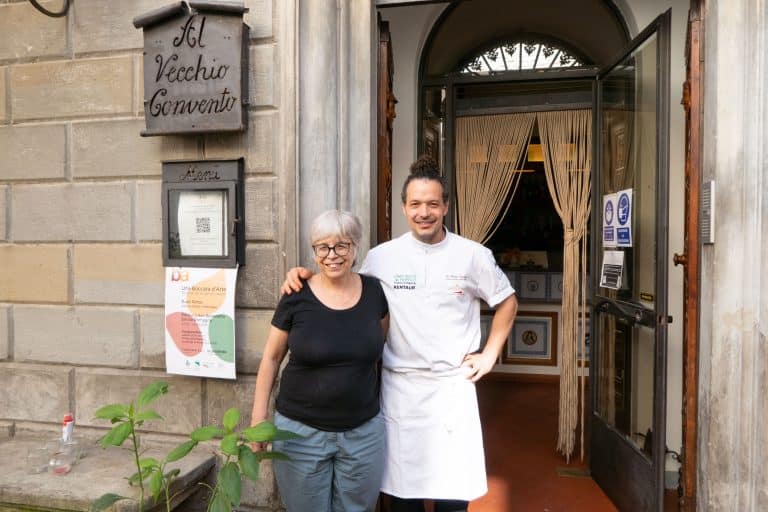
 “In Chianti, warehouses are full and prices are falling”. The economic crisis of Tuscan wine explained by Giovanni Busi
“In Chianti, warehouses are full and prices are falling”. The economic crisis of Tuscan wine explained by Giovanni Busi US tariffs will take effect on 1 August for everyone (including wine). Prosecco DOC: “it’s impossible to plan for the future
US tariffs will take effect on 1 August for everyone (including wine). Prosecco DOC: “it’s impossible to plan for the future Diego Rossi of Trippa opens a new osteria: what you can eat at Nino Osteria con Cucina in Milan
Diego Rossi of Trippa opens a new osteria: what you can eat at Nino Osteria con Cucina in Milan How you eat at Sentiero, the restaurant Elba Island was missing
How you eat at Sentiero, the restaurant Elba Island was missing